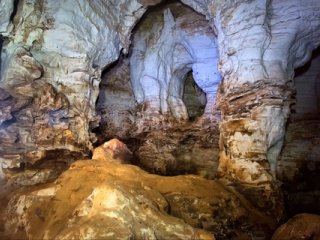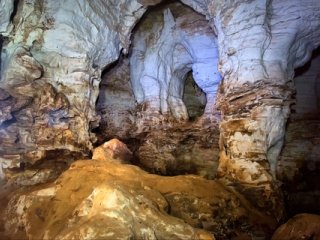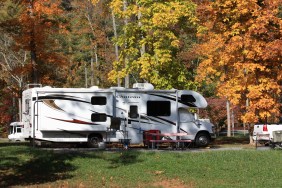 Caving is not an activity for the faint of heart, or the claustrophobic, for that matter. It involves hours in darkness and cold in tight, damp spaces, constantly feeling like you’re lost, alone, and trapped.
Caving is not an activity for the faint of heart, or the claustrophobic, for that matter. It involves hours in darkness and cold in tight, damp spaces, constantly feeling like you’re lost, alone, and trapped.
Some say that no great adventure comes without great risk, great discomfort, and great uncertainty. Caving, perhaps, represents the very epitome of this theory.
In spite of all this, it’s an amazingly explorative experience, not just of nature but of oneself. Like so many outdoor endeavors of our time, it goes against so many of our natural survival and risk-averse instincts, but we’re lucky to live in a world where we can take these risks and go to these very dangerous places in the safest possible way. It helps, though, to have some idea of what you’re getting yourself into.
My first descent underground took me deep in to a limestone cave on New Zealand’s North Island. I wore overalls with a pair of tall rubber boots, gloves, and a helmet with a built-in headlamp. The walls of the cave shimmered and sparkled, like stars in the night sky, and there was always a light stream of water under our feet (a light stream, that is, which carved out the entire cave over the course of millions of years). We were told that if we got lost to remember that the water always flows towards an exit, so we could always get out by following its trail if we needed to.
As we descended, the ceiling lowered, and the walls narrowed. We had to suck in our breath to slip through crevices, we had to slide on our bellies to squirm through tunnels, and we had to grip every protrusion we could find to pull ourselves up on to shallow ledges. With every corner we rounded, the direction would change. We’d be going up, down, left, and right, sometimes making odd u-turns and even moving diagonally. Soon enough, nothing surprised us. Even lowering ourselves onto a surface we couldn’t see, and had to hope would be there when we released our grip and dropped a few feet, splashing in a puddle of silt, wasn’t frightening in the least.
In addition to the unnatural movement, many of the rules we’re used to in our everyday outdoor surroundings didn’t seem to apply. Strange formations grew from the ceilings and the walls. Worms and other creatures burrowed themselves into the rock, hiding from view just inches from our bodies. We couldn’t go over or around obstacles that we found disagreeable — the only way was through.
In many senses, caves represent a strange sort of parallel to challenges we face in life. We must expect the unexpected. We must be prepared to go forward, backward, up, down, or any direction necessary to get to where we’re going. We must know that sometimes, we cannot go around or over, and must go through. And finally, we must remember that despite the cold and the darkness, despite the periodic discomfort and the feeling of being alone or trapped, we are on a great adventure of discovery, and there’s always a path that will take us home.








